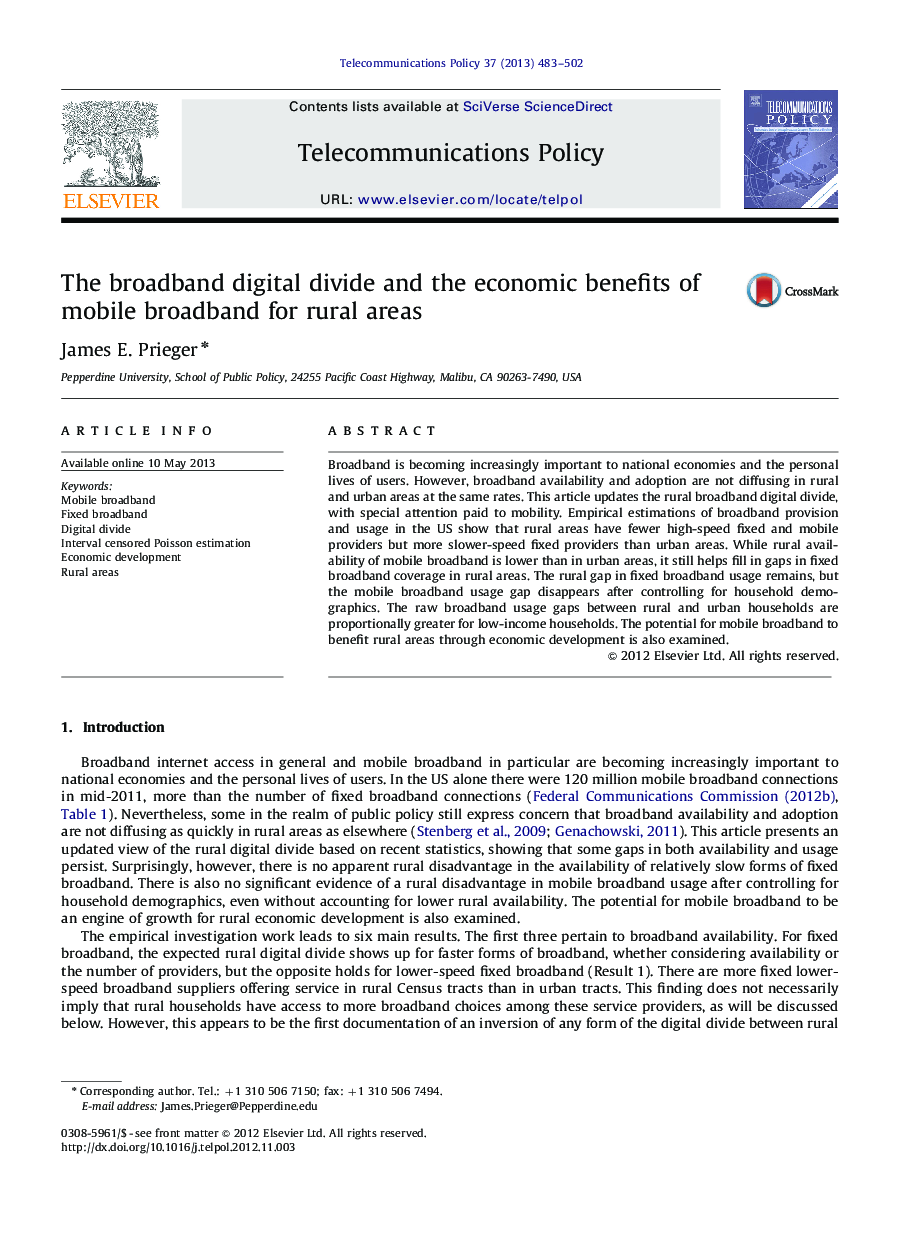| Article ID | Journal | Published Year | Pages | File Type |
|---|---|---|---|---|
| 556931 | Telecommunications Policy | 2013 | 20 Pages |
Broadband is becoming increasingly important to national economies and the personal lives of users. However, broadband availability and adoption are not diffusing in rural and urban areas at the same rates. This article updates the rural broadband digital divide, with special attention paid to mobility. Empirical estimations of broadband provision and usage in the US show that rural areas have fewer high-speed fixed and mobile providers but more slower-speed fixed providers than urban areas. While rural availability of mobile broadband is lower than in urban areas, it still helps fill in gaps in fixed broadband coverage in rural areas. The rural gap in fixed broadband usage remains, but the mobile broadband usage gap disappears after controlling for household demographics. The raw broadband usage gaps between rural and urban households are proportionally greater for low-income households. The potential for mobile broadband to benefit rural areas through economic development is also examined.
► US availability and adoption of high-speed fixed broadband are lower in rural than urban areas. ► There is no rural disadvantage in the availability of slower-speed broadband (a novel finding). ► Rural areas still have fewer mobile broadband providers than urban areas. ► Nevertheless, rural households use mobile broadband no less than urban households. ► Mobile broadband holds great potential to benefit rural areas through economic development.
